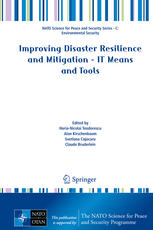

Most ebook files are in PDF format, so you can easily read them using various software such as Foxit Reader or directly on the Google Chrome browser.
Some ebook files are released by publishers in other formats such as .awz, .mobi, .epub, .fb2, etc. You may need to install specific software to read these formats on mobile/PC, such as Calibre.
Please read the tutorial at this link: https://ebookbell.com/faq
We offer FREE conversion to the popular formats you request; however, this may take some time. Therefore, right after payment, please email us, and we will try to provide the service as quickly as possible.
For some exceptional file formats or broken links (if any), please refrain from opening any disputes. Instead, email us first, and we will try to assist within a maximum of 6 hours.
EbookBell Team

4.1
80 reviewsThe focus of this volume is comprised of the fundamentals, models, and information technologies (IT) methods and tools for disaster prediction and mitigation. A more detailed list of topics includes mathematical and computational modeling of processes leading to or producing disasters, modeling of disaster effects, IT means for disaster mitigation, including data mining tools, knowledge-based and expert systems for use in disaster circumstances, GIS-based systems for disaster prevention and mitigation and equipment for disaster-prone areas. A specific type or class of disasters (natural or human-made), however will not be part of the main focus of this work. Instead, this book was conceived to offer a comprehensive, integrative view on disasters, seeking to determine what various disasters have in common. Because disaster resilience and mitigation involve humans, societies and cultures, not only technologies and economic models, special attention was paid in this volume to gain a comprehensive view on these issues, as a foundation of the IT tool design.